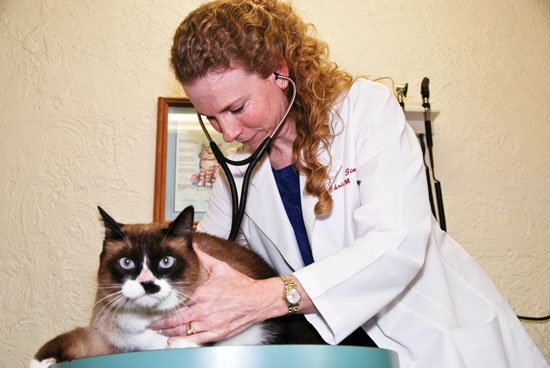What Every Cat Owner Must Know

Adopting a cat is an important responsibility. Cat owners should have a good understanding about:
- how to meet their cats basic environmental needs
- how to properly care for their cat and keep them safe
- understanding their cat’s behaviors
- understanding feline health conditions, treatments and diseases
- and last, but importantly not least, the need for routine preventive veterinary visits
Every Cat Needs Routine Preventive Physical Examinations
Preventive care examinations or check-ups for all cats should occur a minimum of once yearly, and more frequently for senior cats and those with chronic conditions. These visits are important to your cat’s individualized healthcare plan. Some things that will be discussed and assessed are your cat’s nutrition, lifestyle, environmental enrichment, disease and parasite prevention, and behavior.
Preventive Care Examinations:
- Information discussed along with a thorough physical examination provide you and your veterinarian with a plan to help your pet remain healthy.
- Cats age more rapidly than we do so preventive care examinations are a crucial part of a healthy lifestyle.
- During the physical examination, veterinarians can often detect conditions that may affect your cat’s health long before they become significant so they can be managed or cured before they become painful or more costly.
- As a member of the family, your cat deserves the best possible care. Together, you and your veterinarian can best decide how to accomplish that by meeting at least annually to talk about your cat and any changes that have taken place in their life. With the information you bring and a good physical examination, a plan will be created that meets the needs of your cat and the family.
You are an important member of your cat’s healthcare team. You can be instrumental in helping your cat live a happy and healthy quality of life.
What Your Vet Looks for During Exams
Are you curious about what’s going on during your cat’s yearly check-up? It may seem like your veterinarian is just petting your cat, but they are examining your cat’s entire health and lifestyle during the checkup. Some of these include:
- Abdomen and Body
- Muscle Tone and Weight
- Coat, Fur and Skin
- Ears and Eyes
- Mouth, Gums and Teeth
- Heart and Lungs
- Joints and Spine
- Under the Tail
- Taking and Analyzing Samples
- Behavior (11)
- Caring for your pet (263)
- cat (4)
- Community Events (19)
- dog (6)
- From Our Clients (15)
- Happy Tails (8)
- News (418)
- Press (53)
- Products (2)
- Questions (4)
- Recalls (1)
- Special Offers (5)
- Tips & Advice (231)
- Uncategorized (19)
- Veterinary Services (48)
